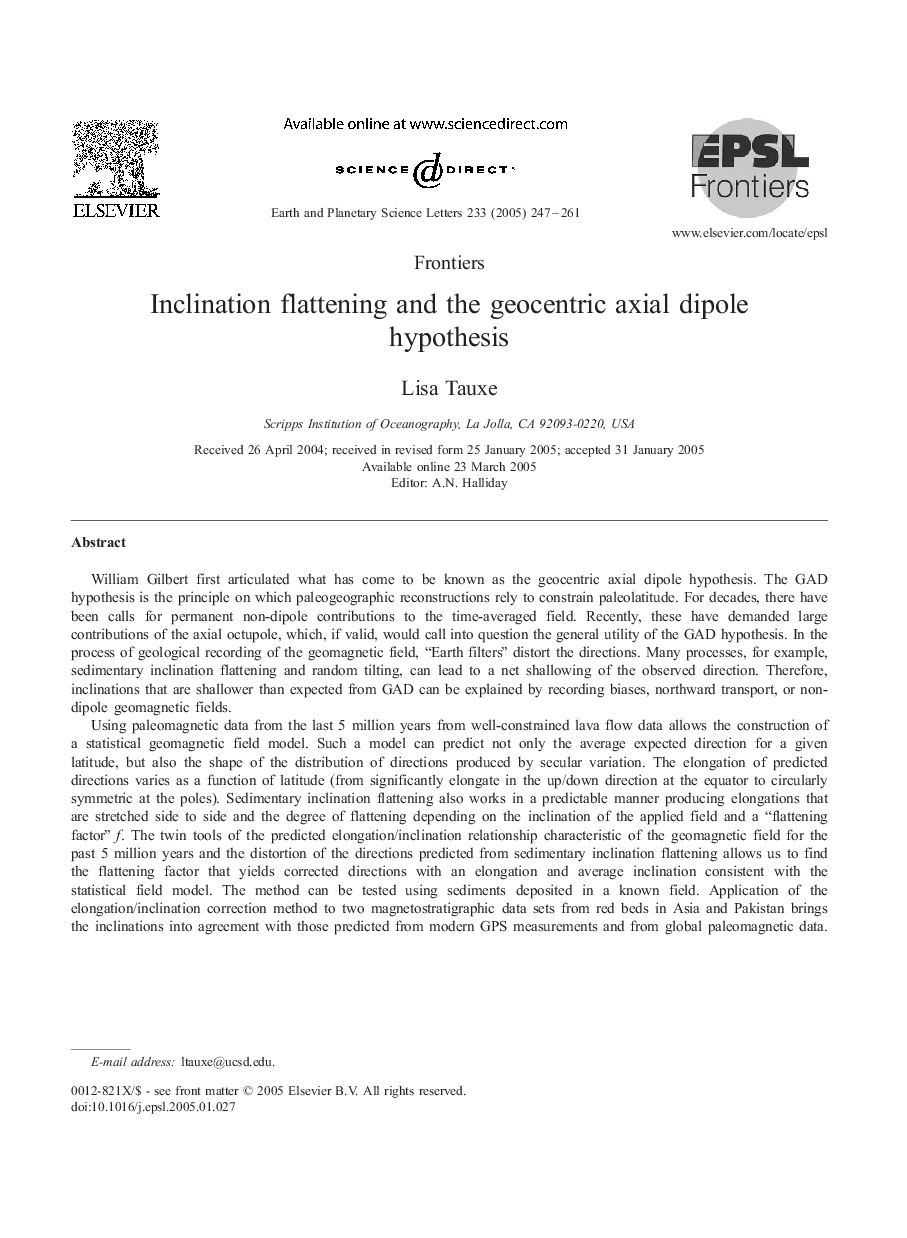| Article ID | Journal | Published Year | Pages | File Type |
|---|---|---|---|---|
| 9522281 | Earth and Planetary Science Letters | 2005 | 15 Pages |
Abstract
Using paleomagnetic data from the last 5 million years from well-constrained lava flow data allows the construction of a statistical geomagnetic field model. Such a model can predict not only the average expected direction for a given latitude, but also the shape of the distribution of directions produced by secular variation. The elongation of predicted directions varies as a function of latitude (from significantly elongate in the up/down direction at the equator to circularly symmetric at the poles). Sedimentary inclination flattening also works in a predictable manner producing elongations that are stretched side to side and the degree of flattening depending on the inclination of the applied field and a “flattening factor” f. The twin tools of the predicted elongation/inclination relationship characteristic of the geomagnetic field for the past 5 million years and the distortion of the directions predicted from sedimentary inclination flattening allows us to find the flattening factor that yields corrected directions with an elongation and average inclination consistent with the statistical field model. The method can be tested using sediments deposited in a known field. Application of the elongation/inclination correction method to two magnetostratigraphic data sets from red beds in Asia and Pakistan brings the inclinations into agreement with those predicted from modern GPS measurements and from global paleomagnetic data. There appears to be no compelling reason at this time to abandon the geocentric dipole hypothesis, which has provided such an excellent working model for so long.
Related Topics
Physical Sciences and Engineering
Earth and Planetary Sciences
Earth and Planetary Sciences (General)
Authors
Lisa Tauxe,
